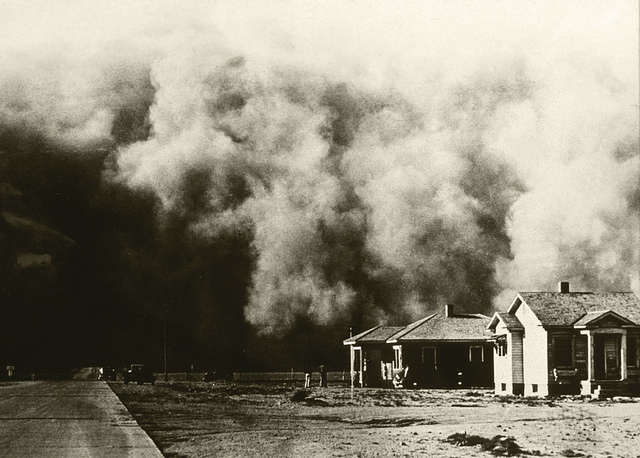Dust storms sweeping across the Plains; Phoenix turned into a place of vice and sand dunes; Texas ravaged by drought and super hurricanes; and corrupt state governments (with militias) battling it out for water rights to satiate their citizens’ unquenchable thirst: It’s the fictional setting of Paolo Bacigalupi's “The Water Knife,” a book that brings alive a crisis of heretofore unseen proportions. “The Water Knife” may be fiction, but its crises aren’t far-fetched.
The American Southwest and Central Plains are no stranger to droughts. However, we forget just how ecologically fragile our surroundings are; after all, the Dust Bowl, engendered by severe drought and abnormally high temperatures, struck the U.S. midsection less than a century ago. An aggregate risk assessment published by Science Advances found that temperature changes predicted in the 21st century push megadrought risk above 70 percent conservatively (90 percent liberally) in the American Southwest. A second research paper compiling data found that the Central Plains and Southwest had an “unprecedented risk” of droughts, including the decades-long kind.
The matter of a catastrophic, decades-long drought hitting the Southwest or Plains isn’t a matter of if but when. This means we must start to prepare now for the unthinkable.
First and foremost, we must work to repair our aged water infrastructure, especially pipes. Household leaks in the U.S. waste more than a trillion gallons annually, according to the EPA. Another report in 2014 said California’s water system wasted over 250 billion gallons of water per year, more water than LA — and about the same as San Francisco — use over the same time period. Investing money into infrastructure now means more water will get to its desired user without escaping. That alone would give us much more water to work with when facing a megadrought throughout an entire region.
Secondly, we must look to the greens: lawns and agriculture. Lawns account for nearly half of water usage by U.S. homeowners. Scaling back water usage for landscaping is a necessity; incentivizing homeowners to supplement traditional plants with a drought-resistant variety and to forgo green lawns would help alleviate water stress currently and in the future. Since agriculture is also such a significant use of water across the country and in the West, transitioning farmers from water-intensive crops (like walnuts and almonds) to water-efficient crops (like grapes) and crops that are drought-resistant is imperative— and could start now.
Looking at employing cost and energy-efficient desalination is also worthwhile considering our oceans account for 97 percent of the water on Earth. Israel now has a reverse osmosis desalination plant, called Sorek, that provides potable water for 20 percent of households in the country. In fact, Israelis now get more than 55 percent of their water from desalination. As technology continues to improve, energy-efficient, cost-effective desalination could very well be a solution to America’s current and future water woes. Former Gov. Rick Perry actually supported large-scale desalination back in 2002. Though the upfront cost may be steep, the long-term benefits far outweigh the initial investment, helping to relieve coastal communities’ groundwater and surface water resources, in turn freeing up water for inland communities.
The American plains and American Southwest are spectacular places. The Southwest, in particular, has a habit of creating oases in arid environments. But when the temperatures soar, wells dry up, and the landscape turns yellow-brown, will we be ready to face a megadrought with resiliency or will our shortsightedness leave us high and dry when the unthinkable becomes reality? Unless we act now, the answer will undoubtedly be the latter.
Liam Verses is a Plan II and environmental engineering freshman.





















